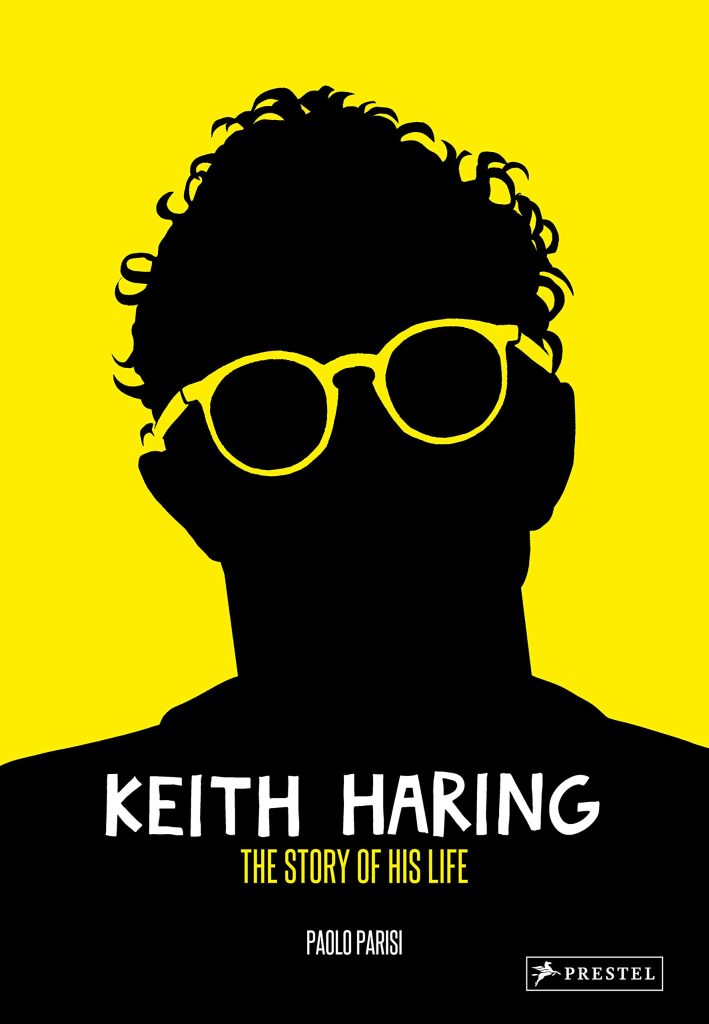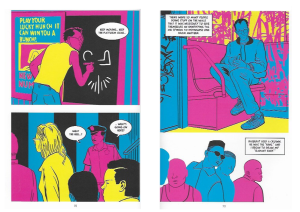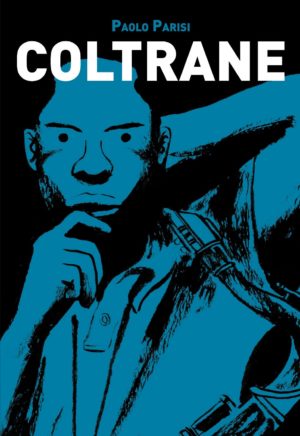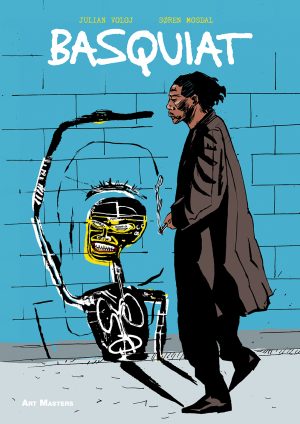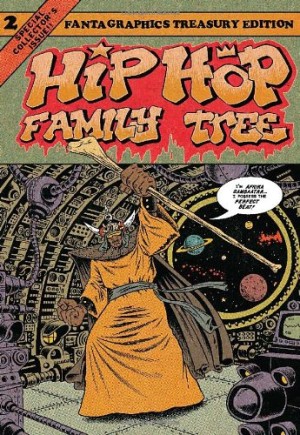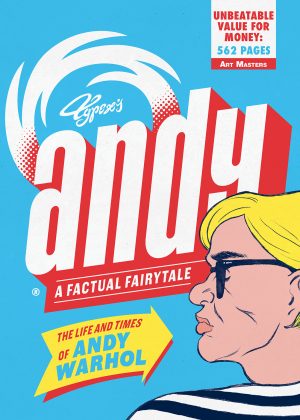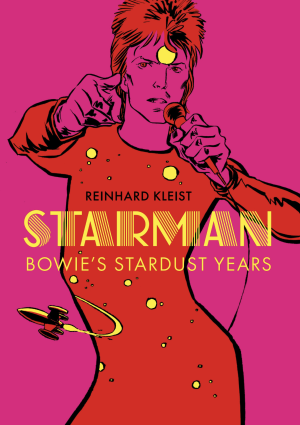Review by Graham Johnstone
His grafitti-born artwork, emblazoned on T-shirts and posters, is more famous than his name. So, Keith Haring: The Story of His Life is very welcome. From Arts imprint Prestel, it sits alongside graphic biographies of painters Hopper, Rothko, Bacon, and Banksy.
Italian designer and illustrator, Paolo Parisi also finds time to write and draw graphic biographies. So far, they’ve come in pairs: jazz music legends John Coltrane and Billie Holliday (aka Lady Day,) then graffiti artists turned art world darlings, Jean-Michel Basquiat, and now Haring.
The jazz books are rendered in expressive brush lines, and era-evoking greyscale. The current book, like Basquiat, is rendered in a more neutral, almost diagrammatic style, with the limited colour palette, here Haring’s trademark primaries. Parisi draws well, if minimally, but it’s his page designs, and ever fresh arrangements of the four colours, that most appeal.
As a subject, Haring is less obviously an outsider than the three African-Americans, but offers the promising story of a small-town boy coming to New York, and coming out, in the years before AIDS.
A strength of Coltrane was the thematic clustering of (time jumping) scenes. For Haring, as with Basquiat, Parisi sticks to straight chronology, but structured as the classic three acts, punctuated by major plot points. ‘1958-1977’ follows Haring’s formative years in small-town Pennsylvania, up to his decision to relocate to New York. ‘1978-1986’ charts his creative ascent, up to encroaching troubles he’ll face in the (significantly, shorter) final act – ‘1987-1990’.
For artists as graphic novelists, biography has an obvious appeal for not having to invent stories. Also, modern lives are well documented, so offering a wealth of source material. From this, Parisi mines a series of appealing anecdotes, and segues them seamlessly together. The highlight is part two, which creates a real you-are-there view of a vibrant arts scene mixing graffiti with galleries, activism with capitalism.
It’s a spotters delight seeing Keith hang out with Andy Warhol and Madonna. Other times, though, he includes lists of people without a single word about them. The sudden appearance, towards the end, of writer William Burroughs (“…an incredible influence on me”) feels as misplaced as the caption identifying someone else as Burroughs. It’s not the only clue betraying Parisi’s distance from Haring’s world. The more serious problem, though, is a lack of attention to planning and editing. It undermined his Basquiat book as it does this one.
For all the appeal of most scenes, there’s an absence of narrative drive, even tension. From his arrival in New York, Haring seems to float into opportunities, like an apartment with fellow art students, that’s right above a gay sauna. There’s never a hint of danger though, even of an art project failing. It’s nice to think that in 1980s Manhattan sexuality simply wasn’t an issue, but that’s a potential source of drama evaporated. Even the epochal ‘gay plague’ of AIDS, is hardly foreshadowed before the climactic plot events require it. A major personal event is squandered because it affects a relationship that a few pages earlier we we didn’t even know about. Very few life stories have such an intrinsically dramatic ending, and it’s disappointing that it’s squandered. The last few pages where Haring faces his own mortality are visually poetic, yet he still shows little emotion.
Haring encapsulates a fascinating, pivotal, time and place. Readers picking this up as an introduction to the man and his world should find it an engaging, visually appealing, account. Other readers might be frustrated that, as with Basquiat, a little more planning and editing could have made it so much better.
